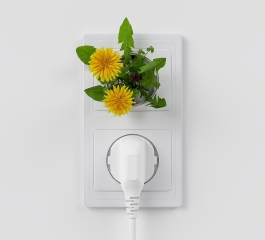Do you want to understand why it is to learn the correct way to throw away your pet’s sand? So keep reading this article until the end, as it is full of important information and tips on the subject in question. Check it out!!
How to dispose of cat litter?
As previously mentioned, correctly disposing of your cat’s litter is essential to ensure its health and hygiene.
However, in addition, it is highly recommended to avoid disposing of cat litter in the kitchen or bathroom waste.
As this can pose health risks due to the presence of bacteria in the animal’s feces.
In addition, it is not advisable to flush sand down the toilet, even if it is silica or a biodegradable product, as this can cause blockages in the plumbing system.
If possible, purchase biodegradable bags and place the feces inside, tying them firmly to prevent bacteria from leaving the bag and contaminating the environment.
However, if the sand is clayey, it can be heavy, so it is recommended to use two bags or a stronger bag that cannot be punctured.
Once properly bagged, you can place it in a bin with a lid to prevent other animals from tearing the bag and spilling the contents.
Finally, it is worth remembering that cat litter made of clay, silica and other contents do not break down over time and also do not degrade, which means that they will contribute to environmental pollution.
Types of disposal
Contrary to what many people think, there are several ways to dispose of your cat’s litter. Find out what they are below:
1.Common garbage collection:
You should consult your local waste collection regulations before disposing of cat litter in the regular trash. Depending on the place, you can dispose of the sand in the regular trash, but you have to bag it correctly.
2.External disposal:
In some regions, there are special containers for biological or pet waste. You can use these containers to dispose of cat litter.
For information on proper disposal locations, consult your local solid waste department.
Finally, it is imperative to remember that in addition to throwing away used litter, you should also clean your cat’s litter box frequently to ensure proper hygiene.
To do this, wash it with water and a mild soap, then dry it completely. Then put new clean sand in the box.
Never throw sand down the toilet or in gardens!
This is critical to emphasize, as cat feces can contain the parasite Toxoplasma gondii, which is responsible for toxoplasmosis.
This parasite is able to survive the treatment of sewage water, which means that it will not be eliminated when flushed down the toilet and can still contaminate the water we consume.
Toxoplasmosis is associated with several birth defects and brain damage in babies; therefore, it is necessary to take strict precautions.
In addition, we must consider that this also poses a danger to marine life.
It is therefore essential to be aware of the correct way to dispose of cat litter, taking into account the implications for public health and the environment.
In addition, it is essential to avoid discarding sand in gardens. This is because the substances present in sand can pose risks to human health and the environment.
Final considerations
In summary, disposing of cat litter correctly is a matter of responsibility and care for your animal, its health and the environment.
For this reason, it is important to follow the recommendations and local regulations on the subject, avoiding throwing sand down the toilet or in gardens.
This way, you will be contributing to the prevention of diseases and the preservation of natural resources.
Remember that your cat deserves a clean and safe environment, and that you too can make a difference with small gestures.


